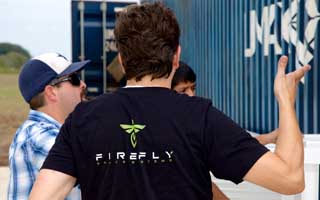CEDAR PARK, TEXAS—Former SpaceX engineer Tom Markusic has brought Firefly Space Systems to the outskirts of Austin to make rockets and chew bubblegum, and he’s all out of gum.
Standing in the vast field on the outskirts of the Texas state capital watching Markusic flitting between clusters of workers welding together test stand equipment, it’s easy to get caught up in the man’s vision of democratizing access to space—a vision of filling that vault of empty sky above our heads with countless twinkling lights writes arstechnica.com.
 That’s the genesis of the company name: Firefly Space Systems. It isn’t named after the TV show, as many people commonly assume. Rather, Markusic says the name came to him one evening while sitting on his back porch, watching fireflies dance in the air over his lawn. One day, he believes, that’s what the sky above Earth will look like—filled with spacecraft ferrying people to Mars, in a journey as commonplace as going to the store might be today.
That’s the genesis of the company name: Firefly Space Systems. It isn’t named after the TV show, as many people commonly assume. Rather, Markusic says the name came to him one evening while sitting on his back porch, watching fireflies dance in the air over his lawn. One day, he believes, that’s what the sky above Earth will look like—filled with spacecraft ferrying people to Mars, in a journey as commonplace as going to the store might be today.
But to get to Mars—really, to get anywhere at all—we’ve first got to make it easy for people and equipment to claw their way up out of Earth’s gravity. After all, as the Heinlein quote on Firefly’s website explains, “When you’re in low Earth orbit, you’re halfway to everywhere.” Making that first hundred miles easy and affordable is what Markusic wants to do.
Firefly is a “new space” company, a term that differentiates it and its contemporaries, like SpaceX and Blue Origin, from “old space” stalwarts like Boeing and Lockheed-Martin. “Old space” companies built Apollo and the Space Shuttle and the ISS, but it’s becoming increasingly clear that the ossified “old space” model of multi-decade government contract work and hidebound development and accounting practices doesn’t own access to orbit anymore.
We’re entering the “new space” era where small agile companies stand on the shoulders of the slow-moving giants and send not just billion-dollar government payloads and multi-PhD-equipped astronauts into orbit, but cheap small payloads and possibly even tourists.

